Dinosaurs were exceptional creatures that pushed the limits of evolution. These beautiful creatures occurred in various shapes and sizes, from the enormous long-necked Diplodocus to the bipedal predators like the Tyrannosaurus. Dinosaurs were on the planet for 165 million years before their rule came to an abrupt end. As Texas had a diverse topography even before the present-day animals started to exist, the land before Texas also hosted a variety of prehistoric animals, some of which were mighty dinosaurs.
Texas is home to many fossils, and dinosaur bones and footprints are among these fossilized remains. In a large strip that spans central Texas, some of these so-called Early Cretaceous fossils can be seen exposed on the surface. Below, we list 14 dinosaurs that lived in Texas and where you can see their fossils today.
14 Dinosaurs that Lived in Texas
1. Paluxysaurus
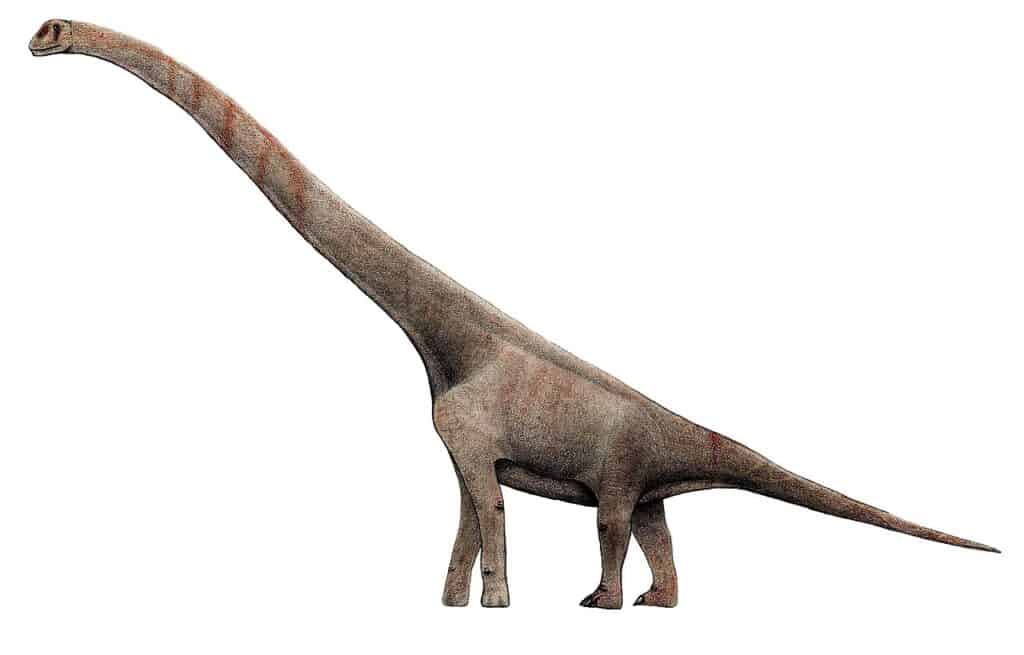
Paluxysaurus is Texas’ state dinosaur.
©Levi bernardo / CC BY-SA 3.0 – License
Pleurocoelus was chosen as Texas’ official state dinosaur in 1997. However, in 2007, paleontologists re-identified Paluxysaurus jonesi as the name of the bones and footprints discovered in the northern and central regions of Texas between 95 and 112 million years ago. Furthermore, the Pleurocoelus was already Maryland’s state dinosaur and not a good choice for the Lone Star State. Thus, Texas changed their state dinosaur into the Paluxysaurus in 2009.
The Paluxy River and the town of Paluxy in Hood County, which is close to the Jones Ranch location where the fossils of this species were found, are the origin of the name Paluxysaurus.
On November 20, the Fort Worth Museum of Science and History launched its new $80 million facility and presented the enormous Paluxysaurus jonesi created for it. Texans may now view their state dinosaur in three dimensions for the first time, thanks to the Paluxysaurus mount.
2. Technosaurus
A dinosaur fossil discovered close to Texas Tech University was given the moniker “Technosaurus” which means “tech lizard.” This dinosaur was about the size of a big dog and possessed teeth with ridges for chopping up the vegetation it consumed. It moved around on all fours while browsing, yet it ran. It is understood that the Technosaurus was a North American dinosaur because its fossils were found in Texas. The enormous reptile Postosuchus and the meat-eating dinosaur Coelophysis were its major adversaries. Due to a lack of available information, very little is known about the other traits and behaviors of the Technosaurus.
3. Acrocanthosaurus
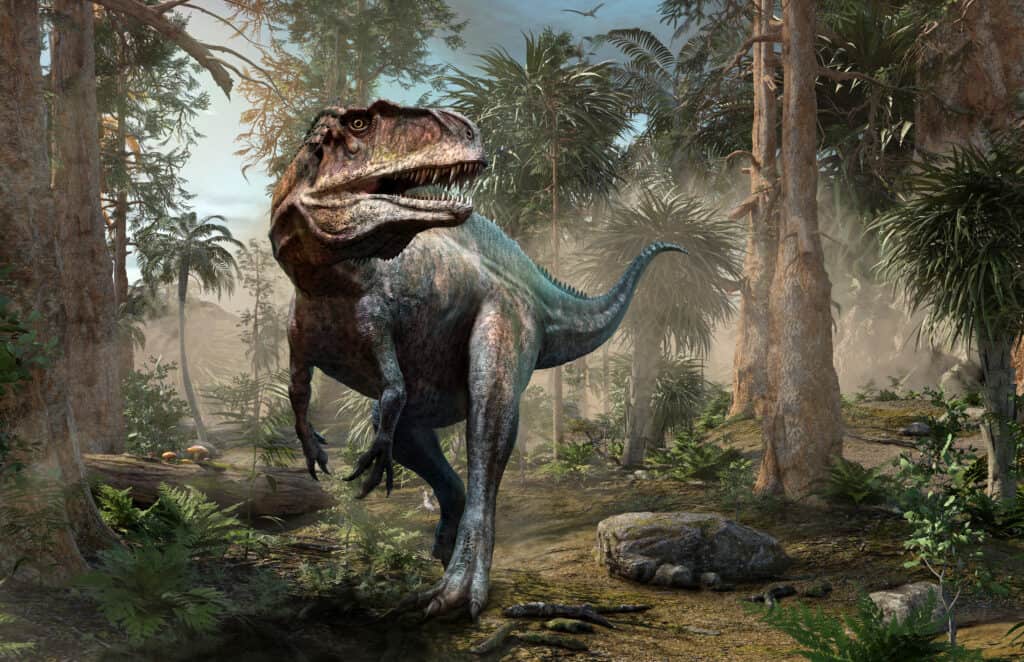
Acrocanthosaurus left hundreds of three-toed fossil footprints throughout central and northern Texas.
©Warpaint/Shutterstock.com
Acrocanthosaurus was initially found in nearby Oklahoma, but it wasn’t until two far more complete specimens were found in Texas’ Twin Mountains Formation that the dinosaur became widely known. A ridge of spines ran down their back, giving the Acrocanthosaurus the nickname “top-spined lizard.” This dinosaur left hundreds of three-toed fossil footprints throughout central and northern Texas. A complete skeleton of Acrocanthosaurus is on display at Idabel, Oklahoma, while public access to its footprints can be found near Glen Rose, Texas. The North Carolina Museum of Natural Sciences in Raleigh, North Carolina is hosts the original skeleton, which Black Hills Institute produced.
4. Iguanodon
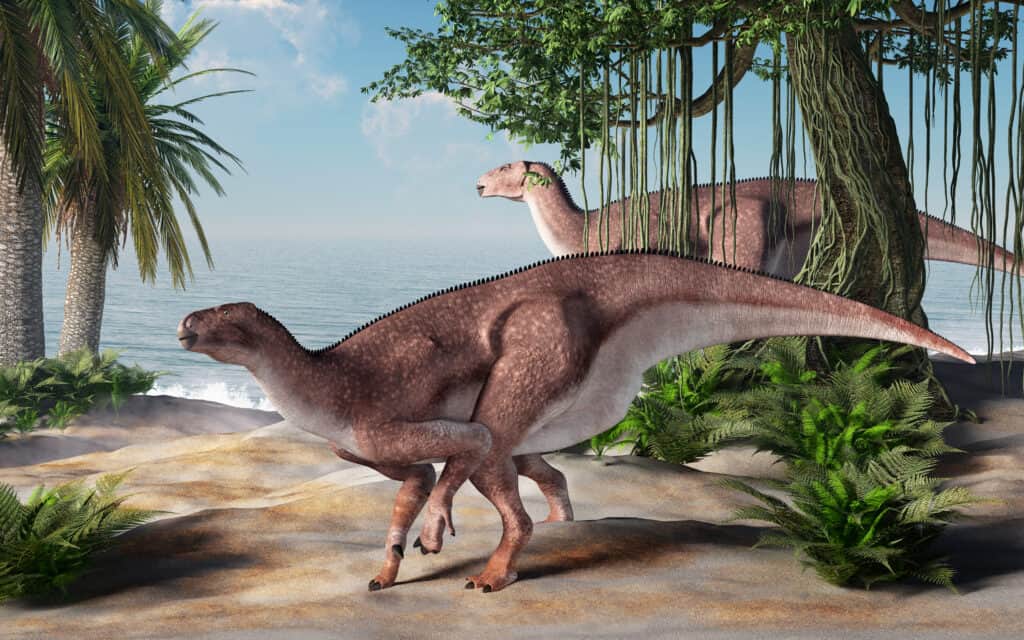
The forefoot of the Iguanodon possessed a spiky thumb for self-defense.
©Daniel Eskridge/Shutterstock.com
Iguanodon is a genus of iguanodontian dinosaurs that was named in 1825. The moniker “iguana tooth” refers to how huge its teeth were compared to those of an iguana lizard. A fossil specimen unearthed in England led William Harding Bensted to discover the genus, which was given its name by English geologist Gideon Mantell. It had the ability to walk on all fours or stand on its hind legs. Each of its five-fingered forefoot possessed a spiky thumb for self-defense, while the three toes on each rear leg ended in claws resembling hooves. Iguanodon traveled in herds and cut down foliage with its horn-covered beak.
5. Coelophysis
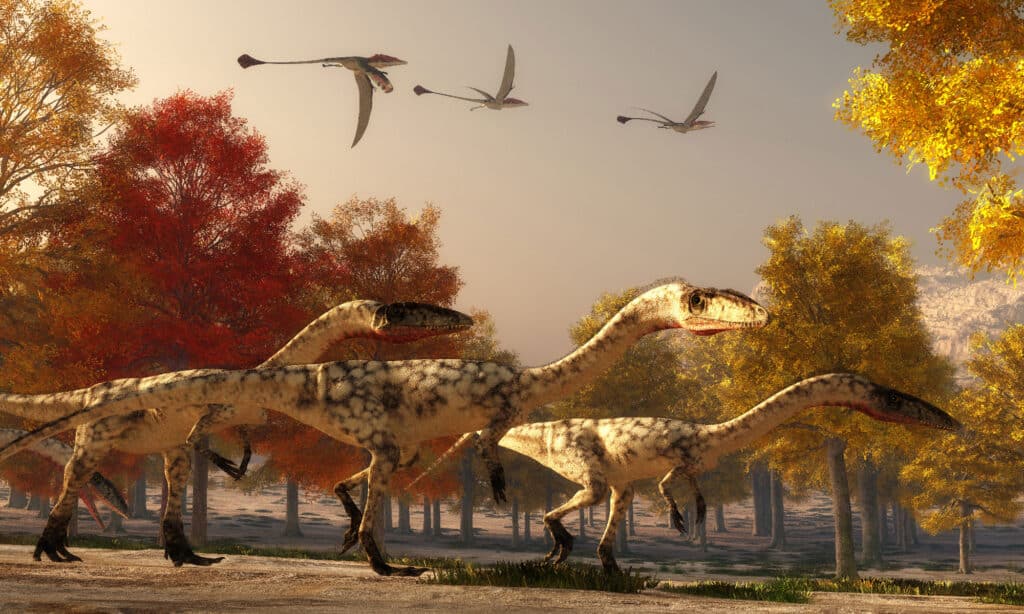
Coelophysis inhabited North America and
Africa
during the Jurassic era.
©Catmando/Shutterstock.com
Due to its hollow bones, the name Coelophysis signifies a “hollow shape.” This dinosaur was a two-legged, tiny, swift hunter with sharp teeth. The oldest carnivorous dinosaur found in North America, the Coelophysis inhabited the continent and Africa during the Jurassic era. Its fossils have been discovered in Texas, the Southwestern United States, Yunnan (China), and Matabeleland North (Zimbabwe), among other places. The huge death assemblage of hundreds of skeletons discovered at Ghost Ranch, close to Abuquiu, New Mexico, and first excavated in 1947, provides information on Coelophysis.
6. Tyrannosaurus

Tyrannosaurus existed about 75 million years ago.
©iStock.com/para827
Tyrannosaurus is a big theropod genus of dinosaurs. One of the most known theropods is the T. rex or Tyrannosaurus rex. Named because of its amazing size and look, Tyrannosaurus means “tyrant lizard.” This dinosaur most likely traveled by itself or in pairs to hunt down weaker members of herds of dinosaurs with duck bills or horns. Their primary offensive weapon was a massive 4-foot head with 6-inch-high steak-knife fangs, and their small but strong forearms acted as grappling hooks. These extinct animals, which existed between 75 and 65 million years ago, have been present in the Western U.S. including Texas, as well as western Canada. Today, you can see an assembled T. rex skeleton in front of Montana’s Museum of the Rockies.
7. Shuvosaurus
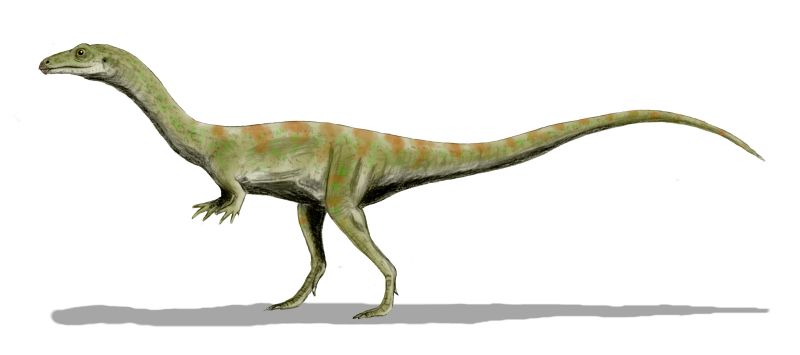
Shuvosaurus was more closely related to crocodiles.
©Nobu Tamura (http://spinops.blogspot.com) / CC BY 3.0 – License
A genus of beaked reptile of the Late Triassic of western Texas is called Shuvosaurus. It was more closely related to crocodilians even though it resembled a theropod dinosaur. It also resembled a large ostrich but without the feathers. The discovery of an archosaur from the Whitaker Quarry at Ghost Ranch, called Effigia, showed that the Shuvosaurus were more related to crocodiles. Following the name of the son of the paleontologist who unearthed this dinosaur, Shuvosaurus is sometimes known as “Shuvo’s lizard.”
8. Alamosaurus
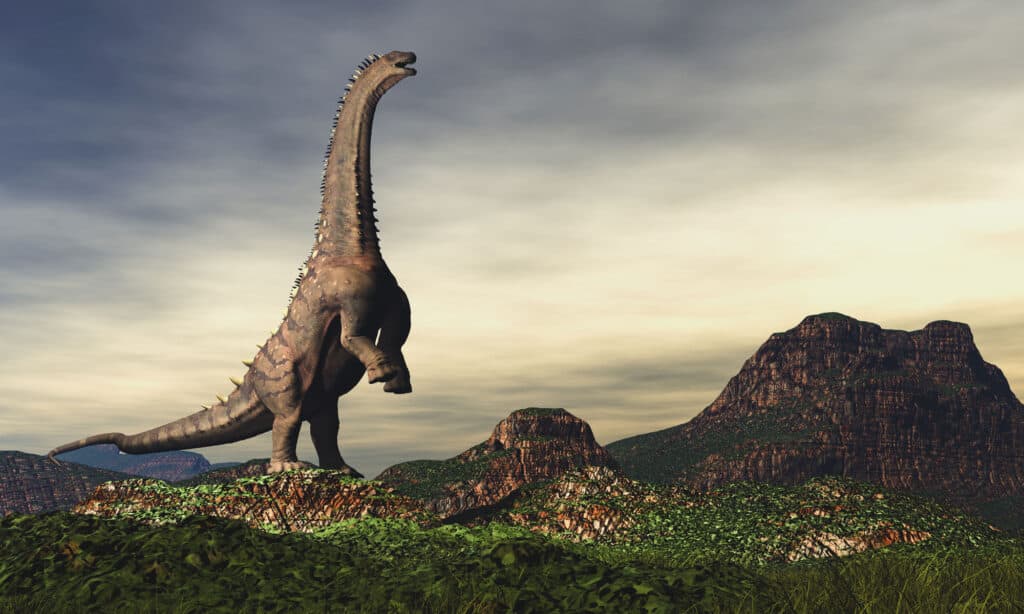
Alamosaurus was a 50-foot-long titanosaur that couldn’t chew with its peg-shaped teeth.
©iStock.com/Elenarts108
The dinosaur Alamosaurus lived in what is now southern North America during the late Cretaceous Period. Despite other fossil specimens coming from the Lone Star State, this 50-foot-long titanosaur that resembled Paluxysaurus was named after the Ojo Alamo Formation of New Mexico, not the famed Alamo of San Antonio, where it was first unearthed. The dinosaur couldn’t chew with its peg-shaped teeth, and plant food was eaten whole and digested in the stomach. Today, Dallas’ Perot Museum of Nature and Science proudly displays the only mounted dinosaur skeleton.
9. Pawpawsaurus
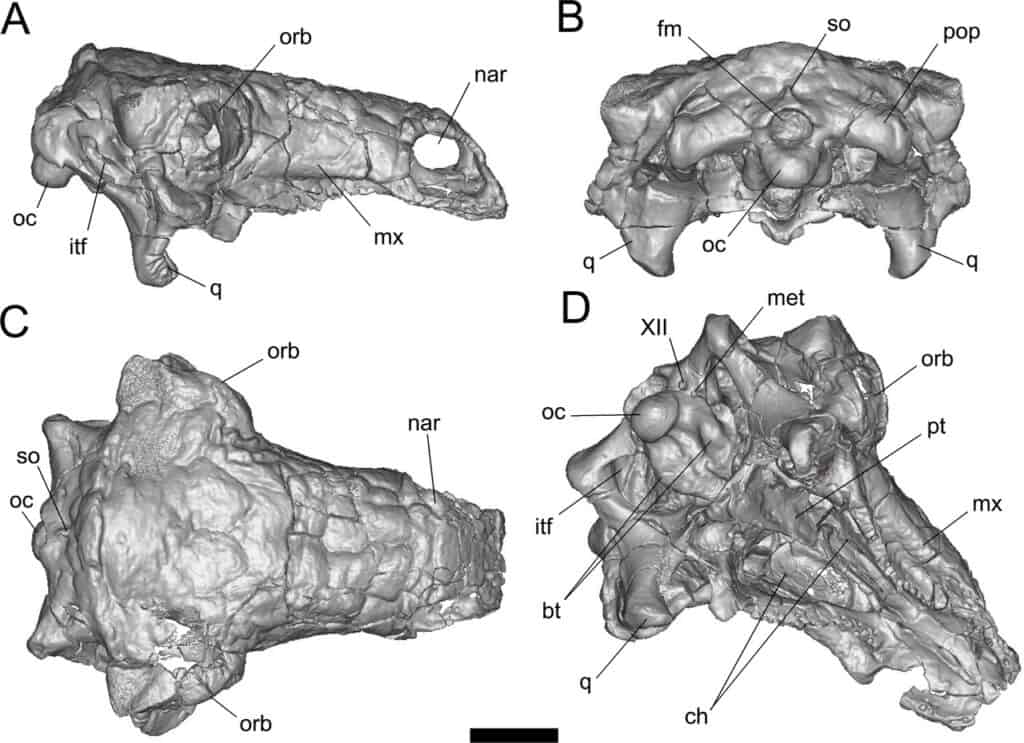
The Fort Worth Museum of Science and History has a full, well-preserved Pawpawsaurus skull.
©Paulina-Carabajal A, Lee Y-N, Jacobs LL / CC BY 4.0 – License
Pawpawsaurus was a typical middle Cretaceous nodosaur. It had protective bone rings over its eyes, which was unusual for an early nodosaur, making it difficult for any meat-eating dinosaur to crack and swallow. The Fort Worth Museum of Science and History currently has the full and well-preserved skull from the Pawpawsaurus on exhibit.
10. Deinonychus

The Deinonychus existed 115 to 108 million years ago.
©Elenarts/Shutterstock.com
Due to its sickle-shaped hind foot claw, the genus Deinonychus is known as the “awful claw .”As it attacked much larger plant-eating dinosaurs like Tenontosaurus, this dinosaur likely hunted in packs. This species existed approximately 115–108 million years ago during the early Cretaceous Period. It had a maximum length of 11 feet. The dinosaur’s hollow bones and long legs suggest quick, graceful movement. The only authentic fossil example of its kind on display anywhere in the world is the Deinonychus exhibit at the American Museum of Natural History.
11. Texacephale
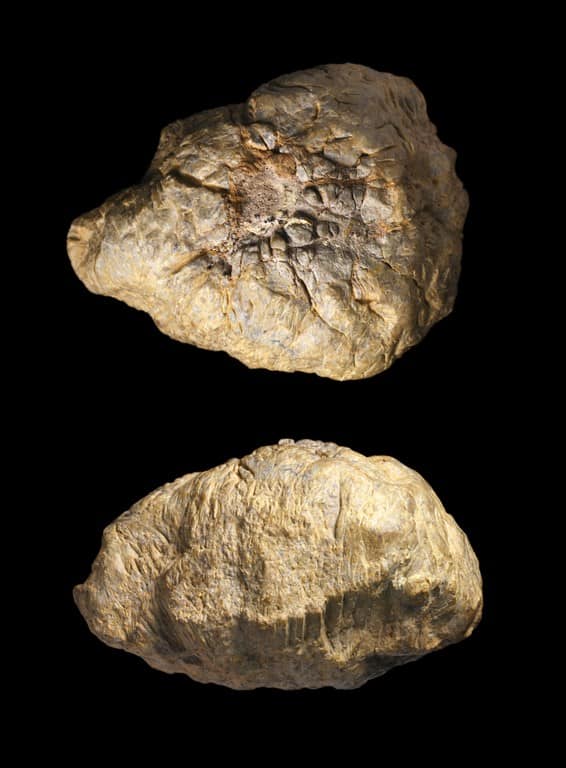
The remains of Texacephale were first reported in 2010.
©NickLongrich / CC BY-SA 4.0 – License
The Texacephale is a Pachycephalosaurs, a group of plant-eating, head-butting dinosaurs. Their abnormally thick heads distinguish them. Their remains were first reported in 2010 by Longrich, Sankey, and Tanke and came from the Aguja Formation in Texas’ Big Bend National Park.
12. Tenontosaurus
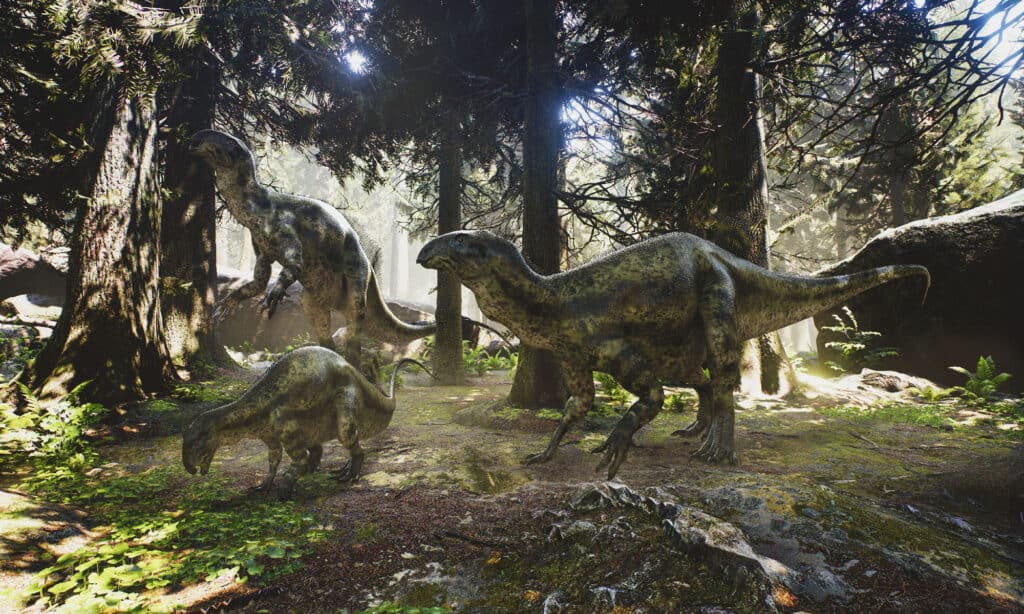
In the Tenontosaurus ecosystem, ferns, tree ferns, cycads, and perhaps early flowering plants were the dominant plant species.
©Herschel Hoffmeyer/Shutterstock.com
Due to its strong, sinewy tail, Tenontosaurus is known as the “sinew lizard.” Although it could stand on its hind legs, this dinosaur ate by crawling on all fours. It probably utilized its extremely long, deep tail as a flail to fend off predators. In the Tenontosaurus ecosystem, ferns, tree ferns, cycads, and perhaps early flowering plants were the dominant plant species.
13. Torosaurus
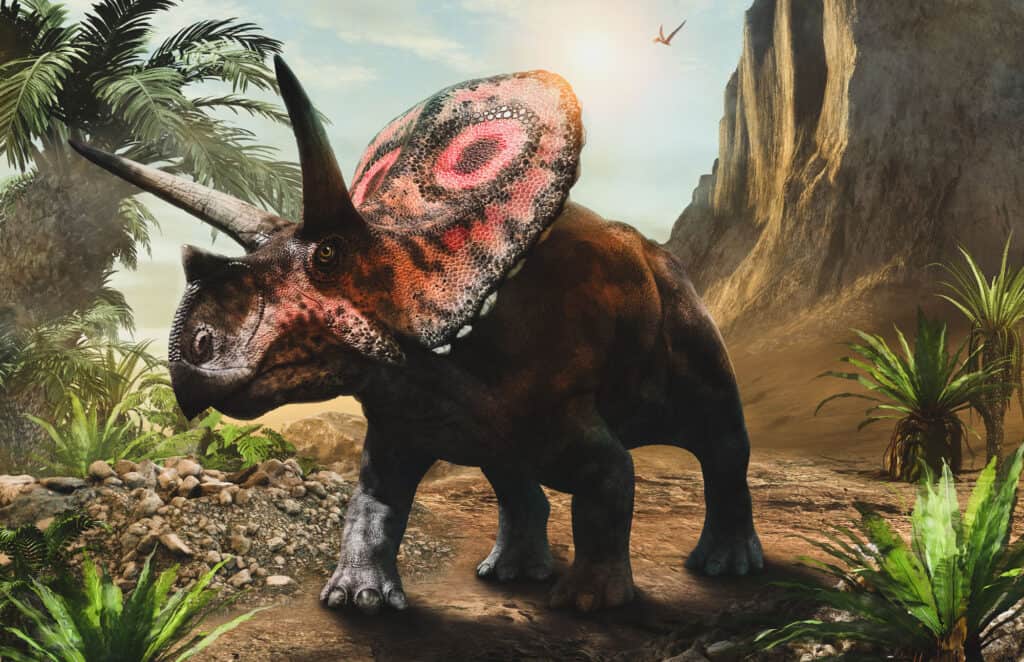
Torosaurus means “bull lizard.”
©iStock.com/Warpaintcobra
A genus of herbivorous ceratopsid dinosaurs called Torosaurus flourished in the late Cretaceous epoch. The huge, cattle-like horns that covered the eyes gave rise to the name Torosaurus, which means “bull lizard.” The majority of western North America, including Texas, was home to these dinosaurs, which weighed an average of 9 tons. The neck frill, like that of all horned dinosaurs, served as a point of attachment for some of its strong jaw muscles and served to defend the neck and shoulder region.
14. Pleurocoelus
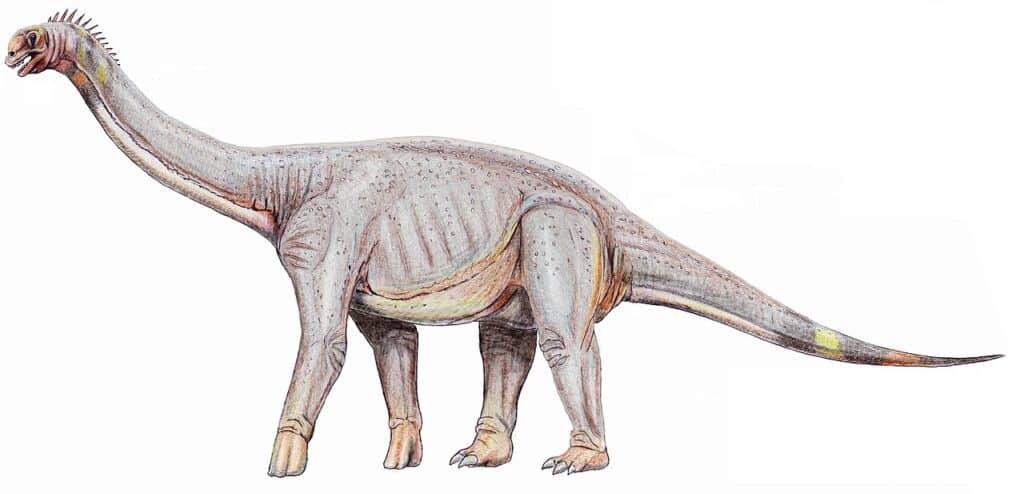
The Pleurocoelus name translates to “hollow side.”
©Dmitry Bogdanov / CC BY 3.0 – License
Due to the way its vertebrae are carved along the sides, the Pleurocoelus name translates to “hollow side.” There are several fossilized tracks from this dinosaur throughout central and northern Texas. Texas passed a law designating Pleurocoelus as the official Lone Star State dinosaur in recognition of the abundance of Pleurocoelus tracks and bones discovered there. However, it was before the Paluxysaurus showed up and took its reign. The footprints’ original location on the streambed is now a part of Dinosaur Valley State Park, one of the best places to see dinosaur footprints, where visitors can see them for themselves.
The photo featured at the top of this post is © iStock.com/para827
Thank you for reading! Have some feedback for us? Contact the AZ Animals editorial team.






